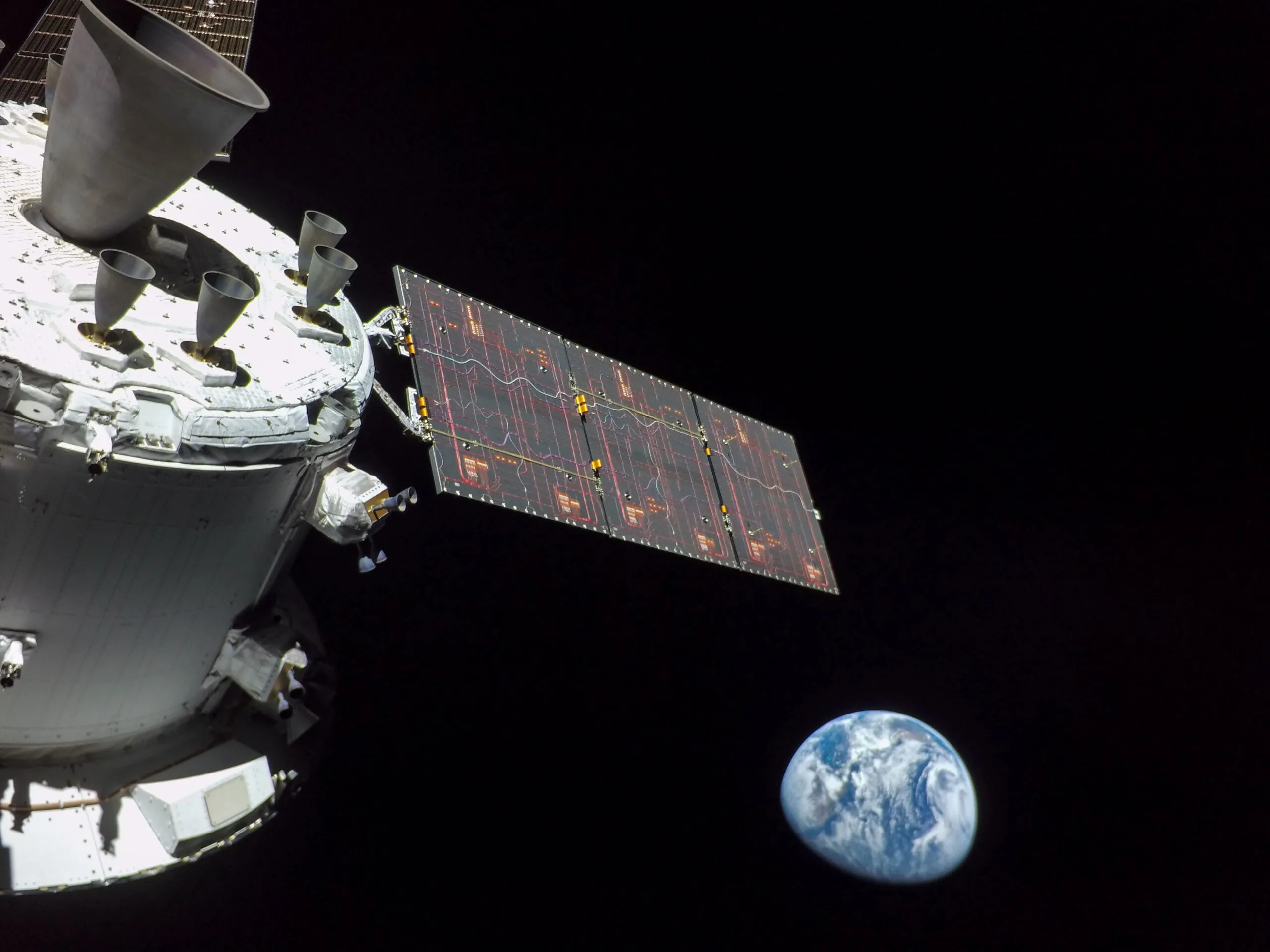Solar panels: essential in space, important for us on earth

Why solar panels in space?

Complex and Innovative
Designing solar panels for space missions is complex and requires innovative materials and techniques. ‘Solar panels in space are designed to withstand exceptional conditions,’ says Van Hassel. During launch, extreme forces are exerted on the wings. At that moment, they are tightly clamped against the satellite, to be folded out once in space. A task that must be guaranteed to succeed in order to be able to supply the satellite with power during the mission. The solar panels in space are then exposed to extremely high and low temperatures, the harmful ultraviolet part of the solar radiation, and other forms of solar and cosmic radiation.
While the Earth’s atmosphere and the Earth’s magnetic field offer protection against these dangers, they are completely absent in space. That is why solar panels for space travel must be extra strong and resistant to aging. ‘The solar panels not only have to be very sturdy, the solar cells also have to function flawlessly until the end of the mission, and at the same time everything has to be extremely light,’ adds van Hassel.
Made in Holland
Airbus Netherlands has been playing a pioneering role in the development of these advanced solar panels for decades and is involved in various high-profile, innovative missions in that role. For example, ‘made in Holland’ wings ensure that the Artemis astronauts will soon reach the moon, the earth observation mission Sentinel-2 and the weather satellite MetOp are equipped with solar panels from Airbus Netherlands, and Dutch solar panels provide power to ESA’s JUICE and NASA’s Europa Clipper satellites, both bound for Jupiter.
